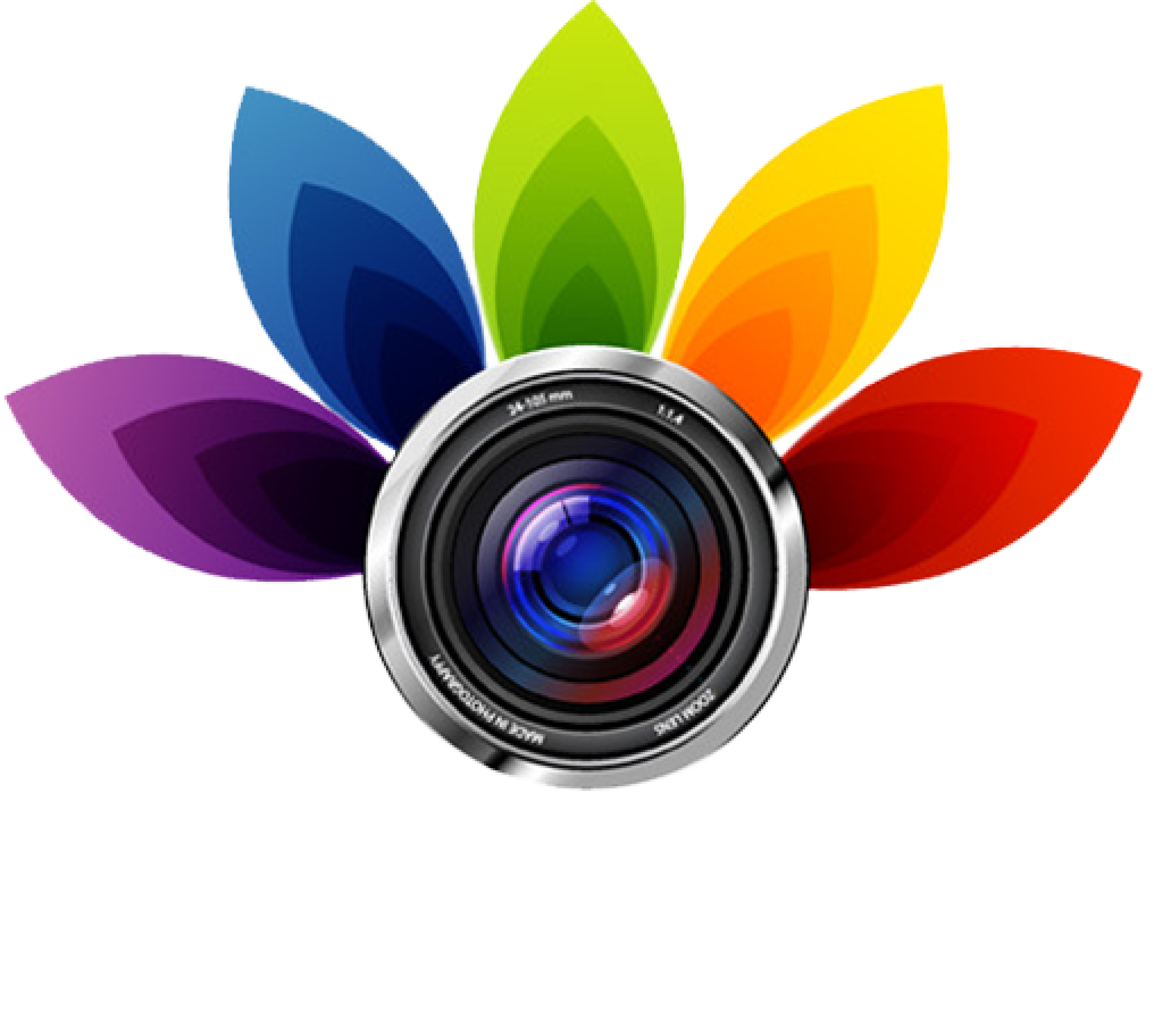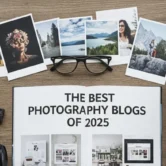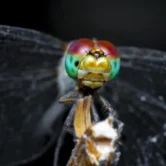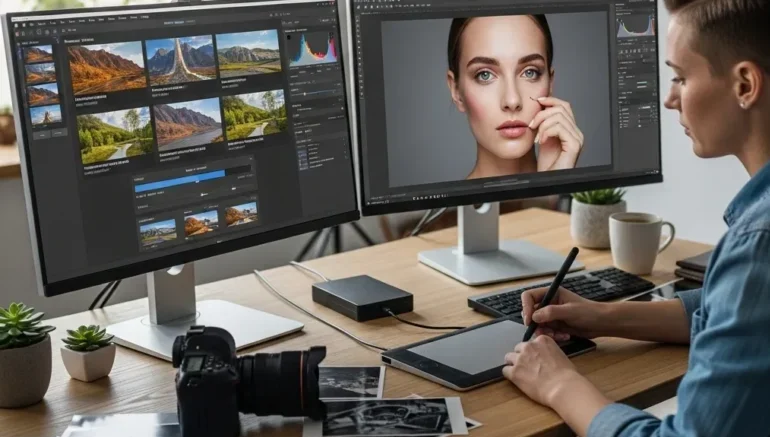
How to Decide If AI or Manual Editing Fits Your Photography Style
Choosing the right editing approach can be just as important as taking the photo itself. With so many tools available today, photographers often ask if AI or manual editing truly fits your photography style. AI offers speed and convenience, while manual editing gives you control over every detail. Both have their strengths, but the best choice depends on your needs, goals, and creative vision. Before you decide, it’s worth looking at how each method can change the way your photos look and feel.
Photography is not only about taking images but also about shaping them into something meaningful. AI editing can save time for busy projects, but it may not always match the unique touch you want in your work. Manual editing, on the other hand, takes patience but allows more freedom and precision. Knowing when to rely on technology and when to trust your own skills can help you grow as a photographer. In the end, the right path is about finding a balance that works for you and makes your photos truly stand out.
Why Choosing the Right Editing Style Matters
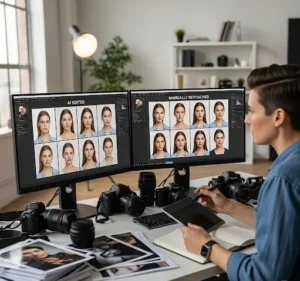 Editing is more than just fixing small mistakes in photos; it shapes the mood and message of your work. The way you edit can make a photo look clear and modern, or soft and timeless. This is why choosing the right editing style matters, because it reflects your creative identity as a photographer. If your editing does not match your vision, the photos may feel out of place or lose their impact. Finding the right approach assures your images stay true to your style and connect with your audience.
Editing is more than just fixing small mistakes in photos; it shapes the mood and message of your work. The way you edit can make a photo look clear and modern, or soft and timeless. This is why choosing the right editing style matters, because it reflects your creative identity as a photographer. If your editing does not match your vision, the photos may feel out of place or lose their impact. Finding the right approach assures your images stay true to your style and connect with your audience.
Your editing choice also affects how your work is seen by clients, followers, or even potential buyers. A consistent style builds trust and helps people recognize your work instantly. For example, some photographers prefer the quick, polished look of AI editing, while others value the detailed and personal touch of manual editing. To make the best choice, think about your goals and the story you want your photos to tell.
Here are a few tips to guide you:
- Decide if speed or detail is more important for your projects.
- Look at your past photos and see which editing method matches them best.
- Test both AI and manual editing on the same image to compare results.
- Stay consistent so your photography style is easy to recognize.
The Role of Editing in Shaping Your Photography Style
 Editing is not just the last step of photography; it is a tool that defines how your work is seen and remembered. The same photo can look completely different depending on the editing choices made, from colors and lighting to sharpness and mood. These choices give your photos a unique personality that sets you apart from other photographers. Without editing, your images may lack consistency, making it harder for people to recognize your style. This is why editing plays a big role in shaping your photography style and making it stand out.
Editing is not just the last step of photography; it is a tool that defines how your work is seen and remembered. The same photo can look completely different depending on the editing choices made, from colors and lighting to sharpness and mood. These choices give your photos a unique personality that sets you apart from other photographers. Without editing, your images may lack consistency, making it harder for people to recognize your style. This is why editing plays a big role in shaping your photography style and making it stand out.
Every photographer has a vision, and editing helps turn that vision into reality. If you prefer clean and simple edits or dramatic and detailed ones, your editing approach becomes part of your identity. Over time, sticking to a consistent style makes your work more professional and memorable. Both AI and manual editing can help in this process, depending on what fits your creative goals.
Here are some tips that may help you:
- Experiment with different editing looks to see what feels natural to you.
- Save presets or editing steps that you enjoy so you can stay consistent.
- Study photos you admire and notice how editing affects their mood.
- Ask for feedback from others to see if your edits match the feeling you want.
When AI Editing Fits Your Photography Style
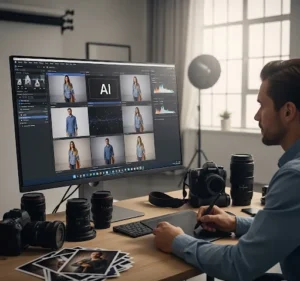 When AI editing matches your photography needs, it can save you both time and effort while still giving great results. Many AI tools are now designed to understand common editing tasks such as fixing lighting, adjusting colors, and removing unwanted objects. For photographers who handle a high volume of images, this can be a practical solution because it allows them to focus more on shooting rather than spending long hours on post-processing.
When AI editing matches your photography needs, it can save you both time and effort while still giving great results. Many AI tools are now designed to understand common editing tasks such as fixing lighting, adjusting colors, and removing unwanted objects. For photographers who handle a high volume of images, this can be a practical solution because it allows them to focus more on shooting rather than spending long hours on post-processing.
AI is also useful for quick turnarounds, such as event photography or eCommerce product shots, where speed and consistency matter the most. With the right setup, AI editing can produce results that look natural and fit your preferred style. However, AI editing is not always a one-size-fits-all solution, so it’s important to know when and how to use it. Some situations may require personal adjustments to keep the photos true to your vision. A smart way to use AI editing is to let it handle the repetitive or basic tasks, then fine-tune the details manually. This balance helps maintain quality without wasting too much time.
To make AI editing work better for you:
- Choose tools that let you customize settings to fit your style.
- Test edits on sample images before applying them in bulk.
- Always review the final results for small details AI might miss.
Why Manual Editing Still Has a Strong Place in Photography
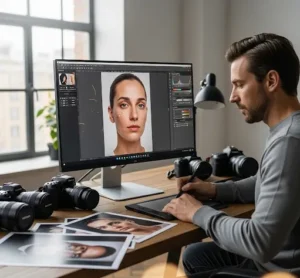 Manual editing still holds a strong place in photography because it allows for complete control over every detail of an image. Unlike AI, which follows programmed patterns, manual editing lets photographers adjust tones, textures, and lighting based on their own creative vision. This is especially important for projects that need a personal touch, like portraits, weddings, or fine art photography. By carefully adjusting each element, editors can create images that feel more natural and unique. Manual editing may take more time, but it makes accuracy and gives the final photo a polished, professional look.
Manual editing still holds a strong place in photography because it allows for complete control over every detail of an image. Unlike AI, which follows programmed patterns, manual editing lets photographers adjust tones, textures, and lighting based on their own creative vision. This is especially important for projects that need a personal touch, like portraits, weddings, or fine art photography. By carefully adjusting each element, editors can create images that feel more natural and unique. Manual editing may take more time, but it makes accuracy and gives the final photo a polished, professional look.
Another reason manual editing remains valuable is that it allows editors to handle complex details that AI may overlook. For example, fixing skin tones, removing small distractions, or adjusting depth in a way that looks realistic often requires human judgment. Many photographers also prefer manual editing because it helps them develop and maintain a signature style that stands out.
Try consider these tips:
- Take time to understand tools like Photoshop or Lightroom for more flexibility.
- Work with layers and masks to make precise adjustments.
- Compare before and after versions to check if edits look natural.
Key Signs That Show What Fits Your Photography Style
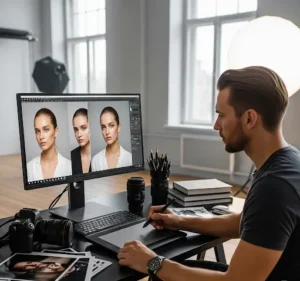 Knowing what fits your photography style can help you decide if AI editing, manual editing, or a mix of both works best for you. One key sign is the type of photography you do high-volume work like product or event photos may benefit from AI, while artistic portraits or creative shoots often need manual editing. Another sign is your editing preference; if you like speed and consistency, AI may suit you; but if you enjoy fine-tuning and adding a personal touch, manual editing is the better option.
Knowing what fits your photography style can help you decide if AI editing, manual editing, or a mix of both works best for you. One key sign is the type of photography you do high-volume work like product or event photos may benefit from AI, while artistic portraits or creative shoots often need manual editing. Another sign is your editing preference; if you like speed and consistency, AI may suit you; but if you enjoy fine-tuning and adding a personal touch, manual editing is the better option.
Your clients’ expectations also play a role, some may prefer natural, lightly edited images, while others want detailed retouching that only manual editing can provide. Being aware of these signs makes it easier to choose the right editing approach.
You can also identify your fit by looking at your workflow and long-term goals. If you often work under strict deadlines, AI can help save time without compromising too much quality. On the other hand, if you’re building a portfolio that highlights your unique style, manual editing gives you the freedom to create a consistent look. To figure out what works for you, try combining both methods: let AI handle the basics, then refine details manually.
Here are some helpful ways to decide:
- Think about your editing speed; do you prefer fast results or careful adjustments?
- Check your past work to see what editing style you’ve naturally leaned toward.
- Test both AI and manual methods on the same image to compare results.
Blending AI and Manual Editing for Better Results
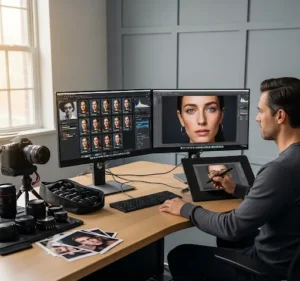 Blending AI and manual editing can give you the best of both worlds in photography. AI is excellent at handling repetitive tasks such as adjusting exposure, correcting colors, or applying consistent edits across many photos. This speeds up your workflow and allows you to focus on the creative side of editing. Once the AI has done the heavy lifting, manual editing can step in to refine the details that require a personal touch. This balance assures your photos are both polished and true to your unique style.
Blending AI and manual editing can give you the best of both worlds in photography. AI is excellent at handling repetitive tasks such as adjusting exposure, correcting colors, or applying consistent edits across many photos. This speeds up your workflow and allows you to focus on the creative side of editing. Once the AI has done the heavy lifting, manual editing can step in to refine the details that require a personal touch. This balance assures your photos are both polished and true to your unique style.
Many professional photographers use this approach because it combines efficiency with creativity. AI helps maintain consistency, while manual editing making each photo feels authentic and tailored. For example, you might let AI edit lighting and shadows, then manually retouch skin tones or fine details to make the image stand out.
Here are some simple suggestions:
- Use AI for basic corrections like brightness, contrast, and background cleanup.
- Apply manual editing for areas that need precision, such as skin, reflections, or textures.
- Always review the AI’s edits to make sure they match your vision before finalizing.
Making a Confident Choice That Fits Your Photography Style
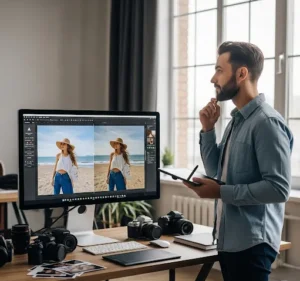 Making a confident choice that fits your photography style starts with understanding your needs, workflow, and creative vision. If your work often requires quick delivery and large batches of photos, AI editing can help you save time without losing consistency. On the other hand, if your projects demand a personal touch and detailed adjustments, manual editing might be the better fit. The key is to look at how you want your photos to represent your style, some photographers lean toward a clean, consistent look, while others prefer a more customized approach.
Making a confident choice that fits your photography style starts with understanding your needs, workflow, and creative vision. If your work often requires quick delivery and large batches of photos, AI editing can help you save time without losing consistency. On the other hand, if your projects demand a personal touch and detailed adjustments, manual editing might be the better fit. The key is to look at how you want your photos to represent your style, some photographers lean toward a clean, consistent look, while others prefer a more customized approach.
Knowing your priorities will help you choose the editing method that feels right for you. It’s also important to remember that you don’t have to commit to just one method. Many photographers find success by combining AI for efficiency and manual editing for fine-tuning. This flexible approach lets you enjoy speed while still keeping your unique style intact.
Here are a few practical ways to decide:
- Try editing the same photo using both AI and manual methods to see which outcome you like best.
- Consider your workload and deadlines, tight schedules may benefit from AI support.
- Think about your long-term goals; do you want efficiency, artistry, or a mix of both?
Conclusion
Photography is more than just pressing the shutter; it’s also about how you shape your images through editing. If you lean toward AI for its speed or manual editing for its precision, the real goal is to create photos that represent your vision. Some photographers thrive with the efficiency of technology, while others enjoy the artistry of hands-on editing. There’s no single right choice, only the one that fits your style and workflow best. How about you? Do you find yourself trusting AI, sticking with manual edits, or blending both? Drop your answer in the comments, I’d love to hear your take.
Read Next: The Complete Guide to Jewelry Photo Editing from Shoot to Finish
